Eclectic style – top designers on 11 ways to create a layered decor look full of personality
Eclectic style is what makes interiors sparkle. And through a collected mix of flair and decor, experts explain how to do it with no clutter in sight
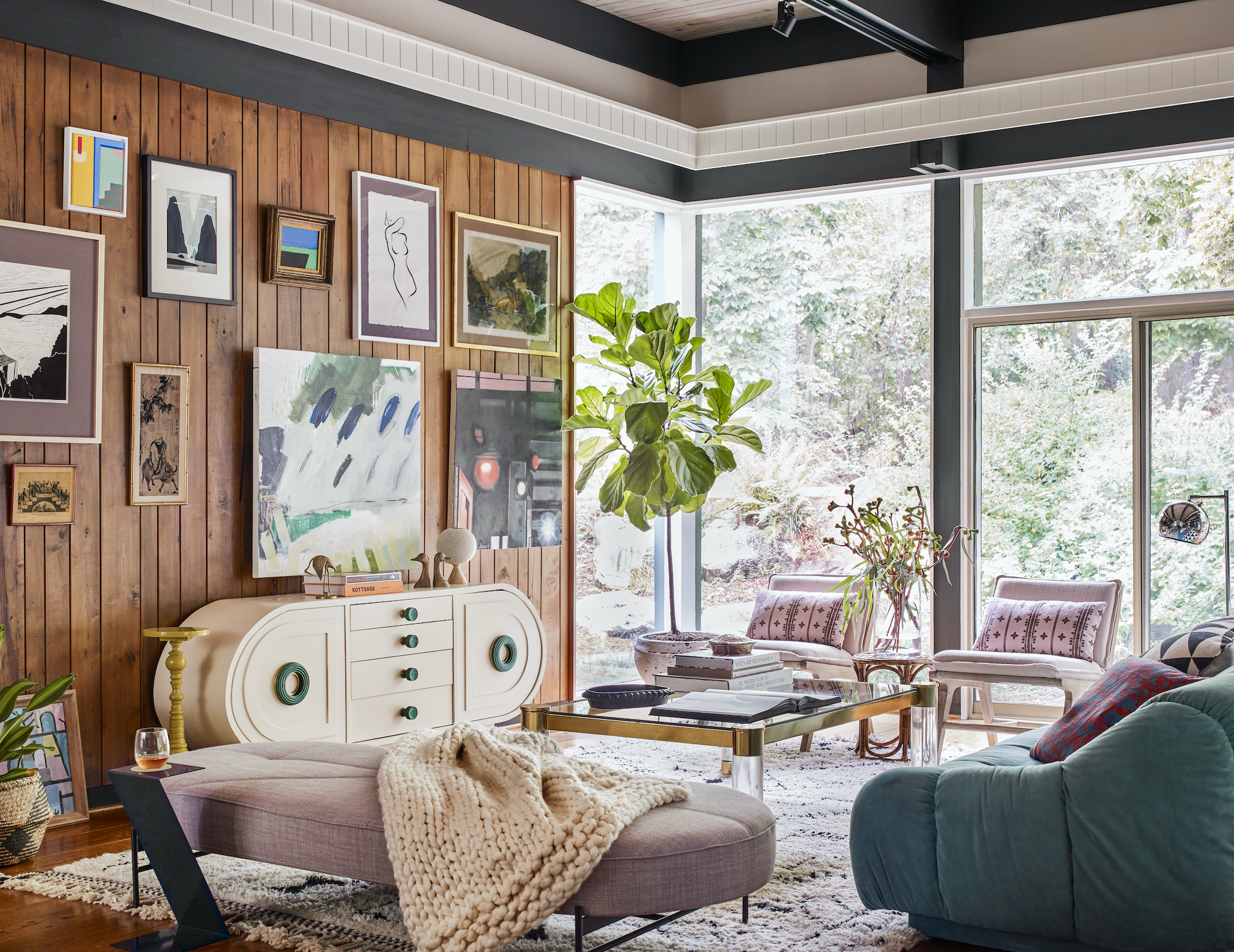
A tidy definition of eclectic style in interior design is tough to pin down. Known for mixing and matching, the outcome is often a layered look that’s entirely individual, with bits and pieces from old and new styles in one.
Sounds like a whole bunch of stuff, doesn’t it? Not exactly. Although the term 'eclectic' is widely used to describe spaces that don’t fit squarely into one genre, the interior design style isn’t just unfocused clutter – there’s always a point of view.
“[The] thing about eclecticism is that it’s all about the eye of the beholder – we all have a different idea of what that word means,” says interior designer Kathryn M. Ireland, who runs an online course on curating interiors with Create Academy. “The most important thing for me is to carefully curate spaces with comfort at their core, not following a set aesthetic formula, but curating elements that will feel comfortable and relevant to specific clients, based on their own personalities and lifestyles.”
Inviting, personal, and comforting interiors are a trademark of the eclectic look (the inevitable outcome of a style that forgoes strict rules and embraces elements of disparate genres). But it’s the way pieces complement and converse with one another that truly creates soft tension and visual interest - there is more thought at work here than just an embrace of maximalism.
“Eclectic design wants a mix of styles that seamlessly work together without anything feeling overly designed," says interior designer Jake Arnold. "The beauty of collecting and curating, whether that's mixing vintage and custom, prints and solids, or combining various sensory textiles together, often achieves that eclectic look.”
This makes the eclectic style a hard rubric to handle, but a few guiding principles can help you nail the look. Below, we spoke with designers to get their tips and tricks for designing a successful eclectic home.
Eclectic style - a guide to getting it right
1. START WITH STATEMENT PIECES
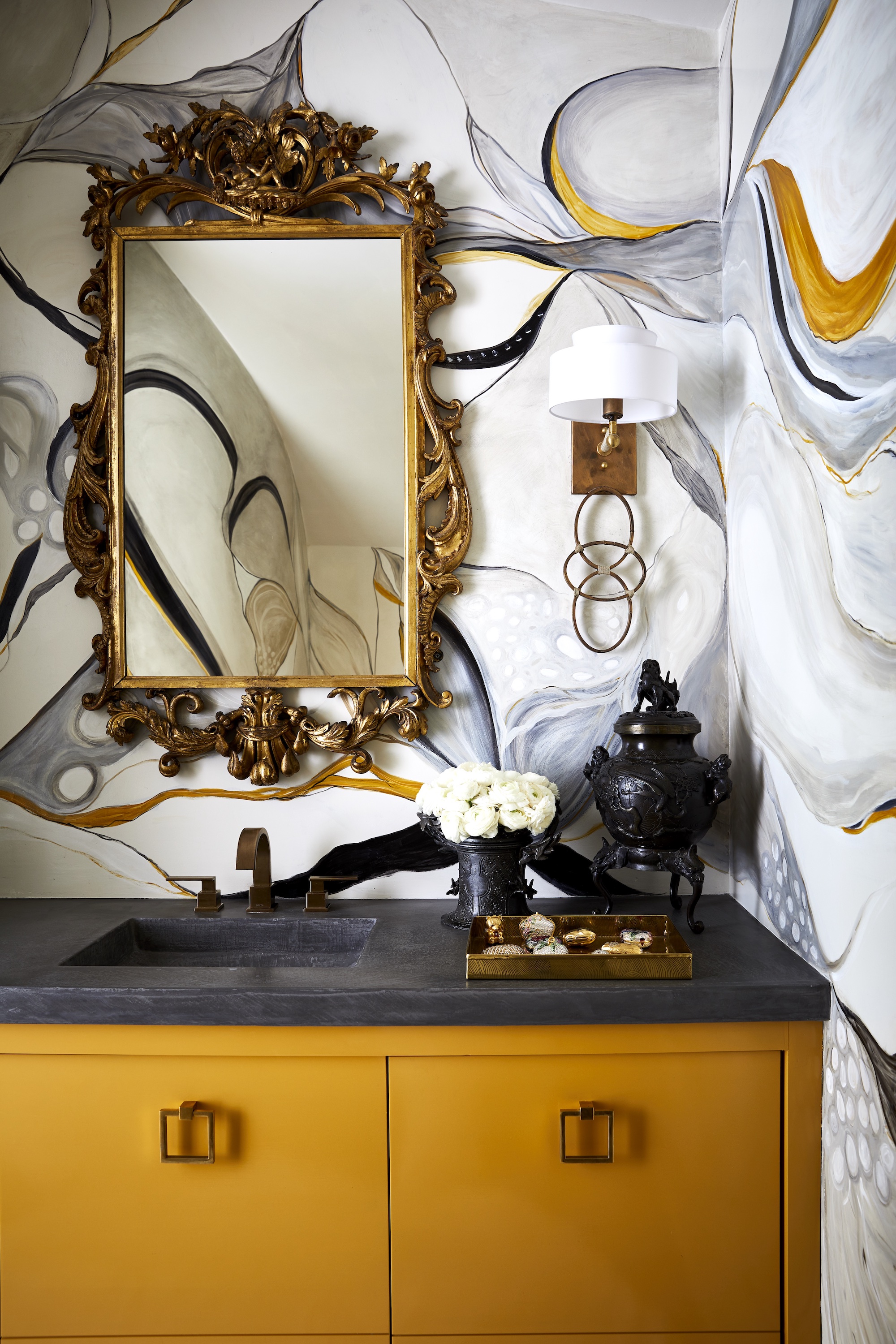
Starting from scratch? Start small by picking one or two statement pieces. “Creating an eclectic room with flair starts with a few statement pieces that I use to work from,” says Gray Walker of Gray Walker Interiors. “Deciding on what you want to start with is the base of the design.” Once you settle on these standalone items, you can build the rest of your eclectic interior around the collection, mixing and matching as you go.
In this small bathroom, Walker started with an idea for a hand-painted wall – the rest of the decor followed suit. "The antique mirror crowns a modern cantilevered vanity and concrete top effortlessly,” adds Walker. “Clean and chic brass faucetry adds a streamlined element while working well with the avant-garde interlocking oval sconces. The abstract hand painted walls in rich yellows, greys and blacks serve as a multi use juxtaposition for all of the styles of each piece in the space.”
2. PAINT YOUR WALLS ONE COLOR
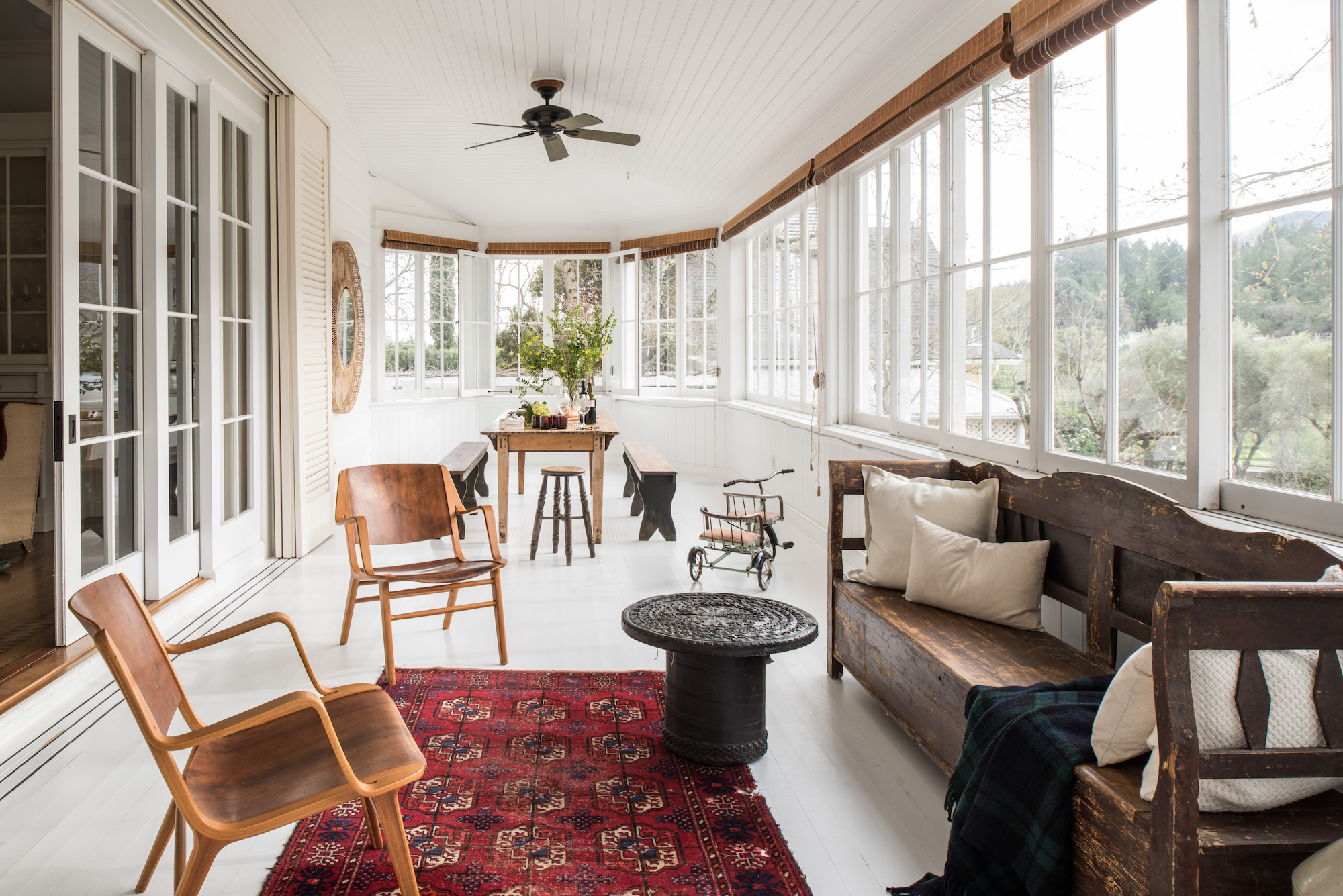
With so many competing pieces of decor, pulling off an uncluttered eclectic interior isn’t easy. But one trick can all but guarantee clarity: picking a single color as your backdrop (especially white paint for walls) will instantly clear up your space – think of it like negative space, or breathing room for your collection of objects. in this way, eclecticism borrows ideas from minimalism. In fact, in this way, even the pared back approach of Scandinavian design lends itself to this school of thought, too.
“I like to paint the walls, trim, and molding all one color,” says interior designer Katie Martinez. “It makes traditional rooms feel contemporary and provides a subtle backdrop for eclectic furniture groupings.” In the sunroom above, Martinez used a floor-to-ceiling, all-white backdrop to prevent the room from appearing too cluttered.
3. REPEAT POPS OF COLOR
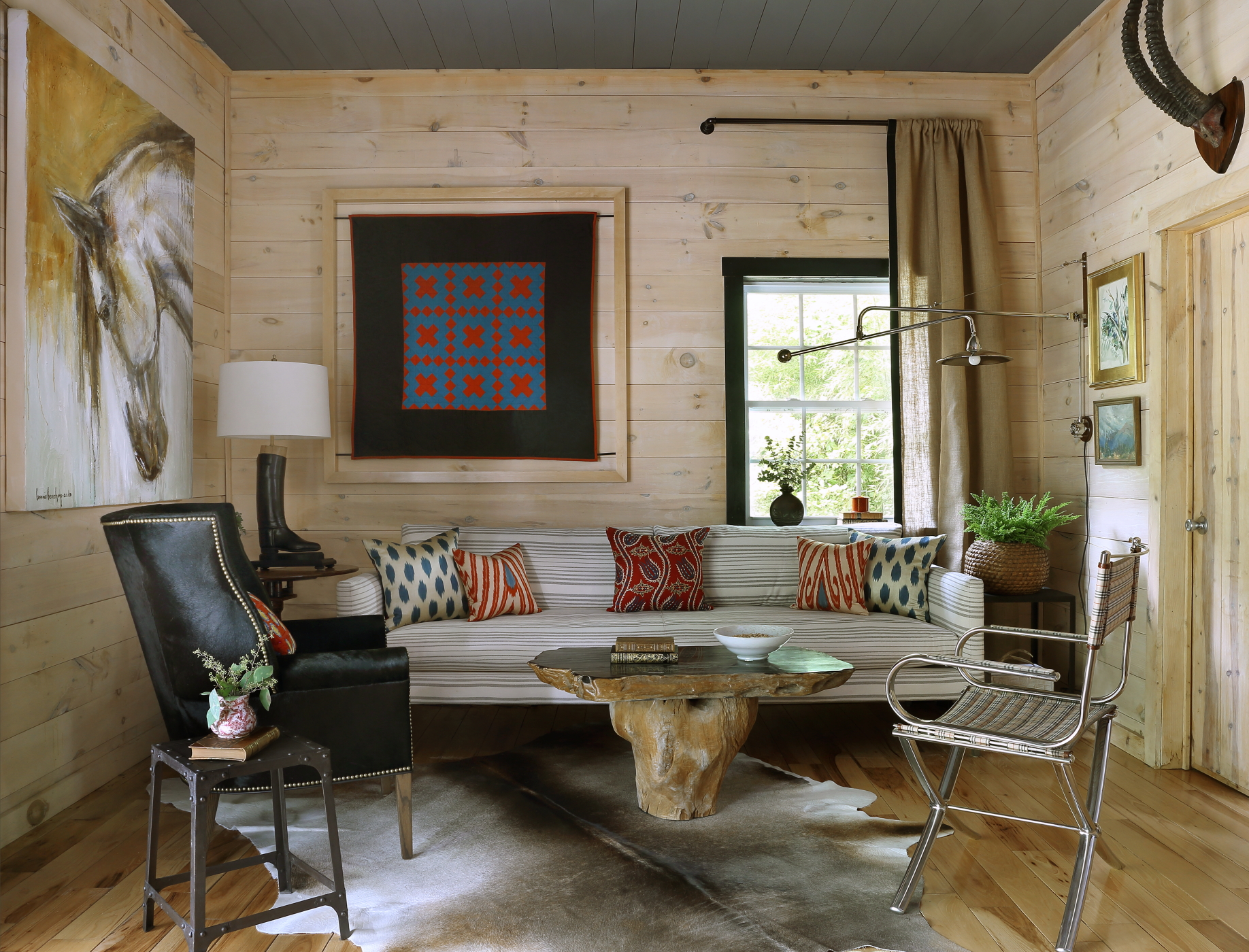
How can you create cohesion with an aesthetic known for mixing it up? The art of repetition can unify your space, and repeating signature colors is a great place to start. “The most common way to create repetition is through color in your varied styles, textures and patterns in the space,” says interior designer Christy Dillard Kratzer. “I usually start with a couple of neutral colors for the backdrop and layer in the color around the space from some inspirational items (artwork, fabric pattern, rug, etc.).”
In the modern farmhouse living room above, Kratzer used pops of color to create harmony between the rustic and modern decor. “The framed quilt was one of the starting points for this space and then I continued to add pops of the colors found in the quilt throughout the space,” she says. In doing so, the framed textile’s dark border gets picked up by the hair-on-hide wing chair and the black window frame, while bright blues and reds pop across silky pillow cushions.
4. PICK PIECES WITH CHEMISTRY
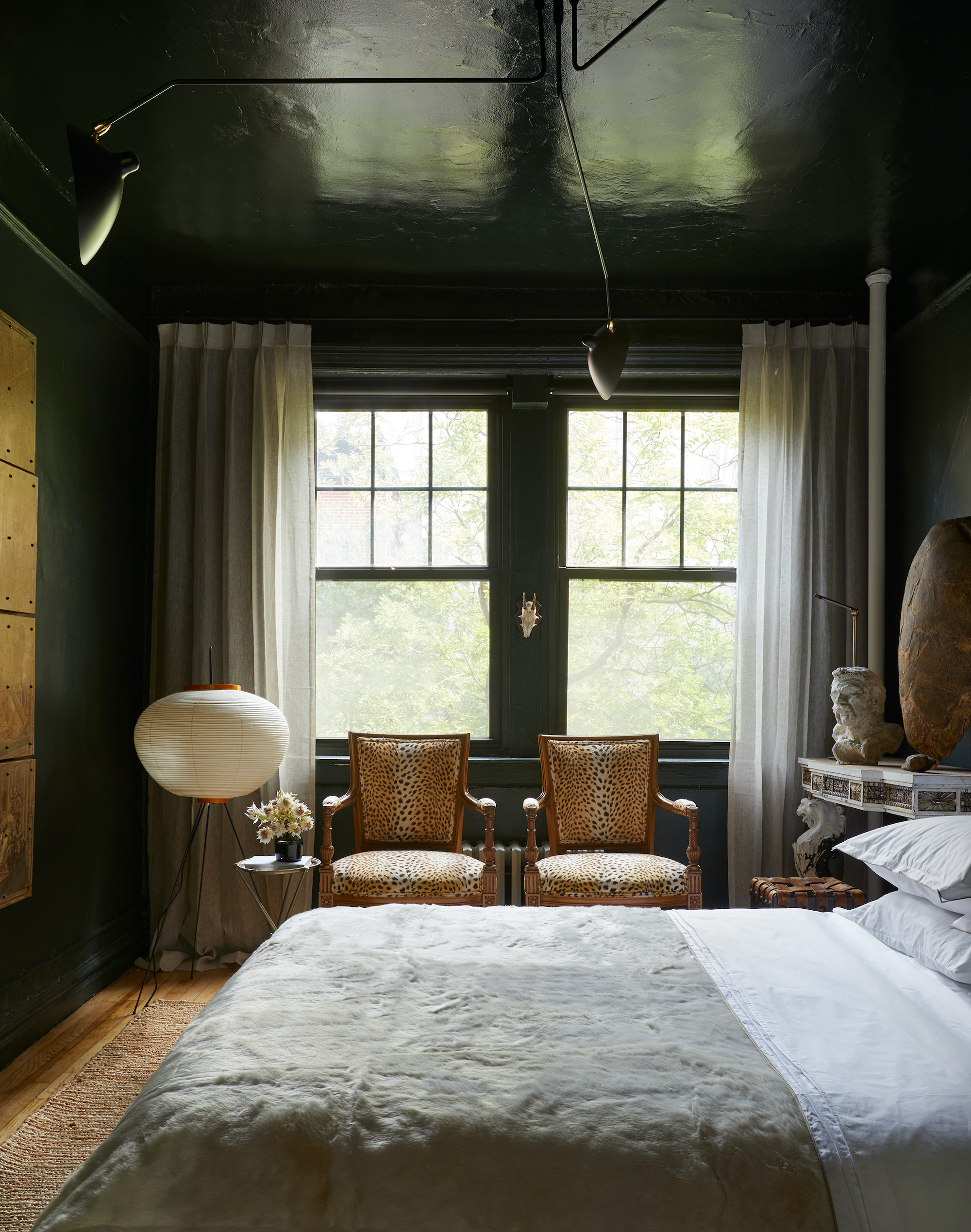
Remember that you aren’t creating a space filled with miscellaneous stuff, but a space that mixes hand-picked decor that’s in conversation with one another. “I think it's much like a dinner party: pairing a varied group of people (things) together with different attributes, that will compliment and make for a great room (party),” explains architect and interior designer David Frazier. “Layering those items together gives an eclectic and collected aesthetic that instantly adds interest.”
In the moody green bedroom above, Frazier sparked visual interest high and low. “Here we have a classic Serge Mouille ceiling fixture, contemporary custom-designed bed, antique french chairs, contemporary art by Addie Chapin, and an antique console living in harmony,” he says. “It is much more interesting than a room full of matching furniture from the same style and period.”
5. FIND DECOR WITH COMMON GROUND
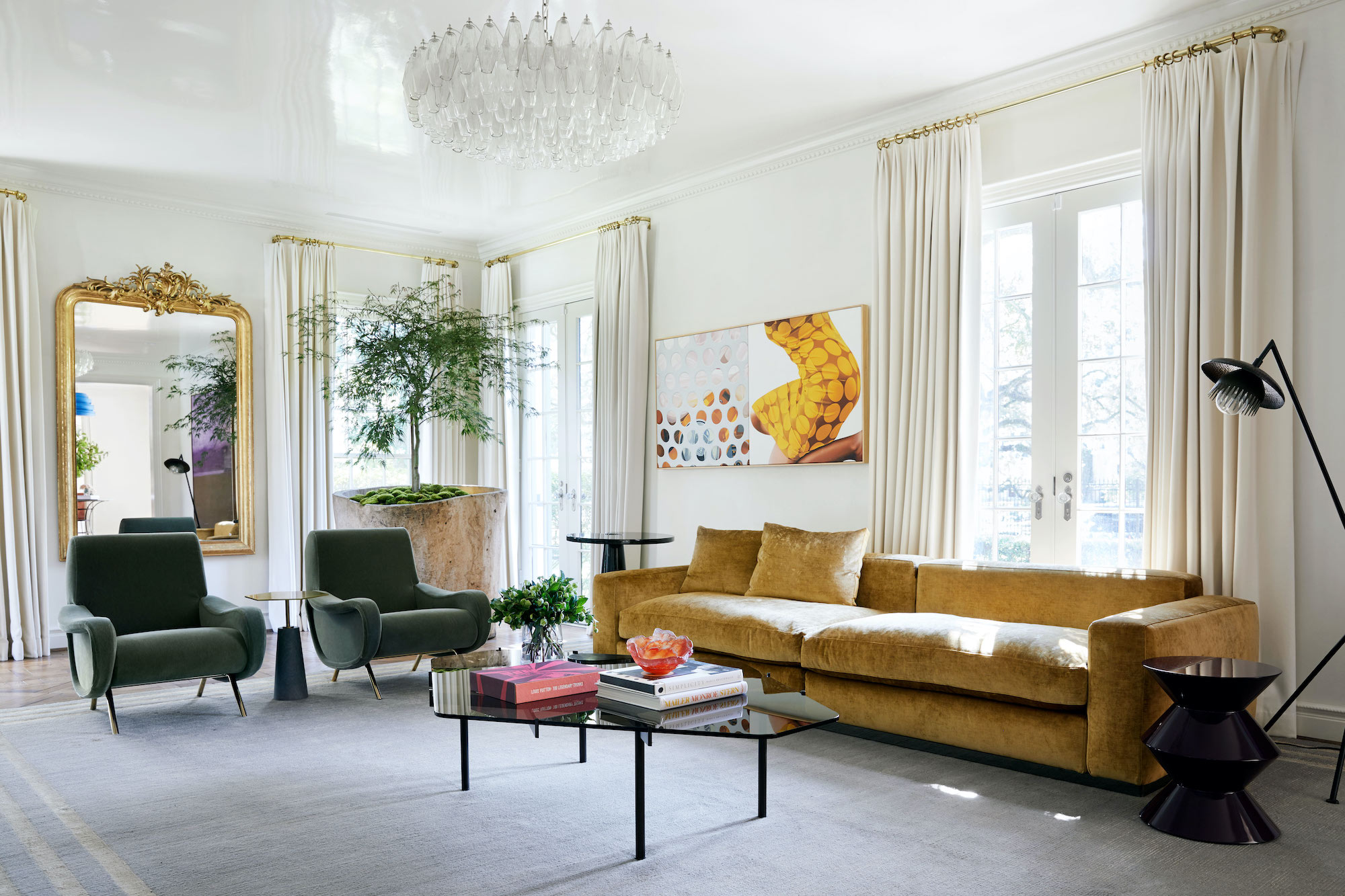
Although it’s a textbook trait of the style, you can build eclectic style into your interior by mixing furniture and decor from different time periods. The real finesse, however, is finding ways to connect these old and new pieces. “Mixing old and new is one of our favorite ways to create an eclectic, layered look,” says interior designer Meg Lonergan. “The trick is to ensure that you find common ground among the pieces.”
Wether you explore similar shapes, textures, or colors, the trick is to find a common thread that connects them all. In the interior above, Lonergan used the color gold as her loose theme. “In this case that common ground was the color gold, which we incorporated in large and small ways throughout the room,” she says. "We mixed a gilt French Louis XV mirror we found in New Orleans with a Flexform sofa upholstered in gold velvet."
We love this hotel's lessons in mixing materials, all of which have a common ground to tie the space to together.
6. SEEK BALANCE WITH SCALE
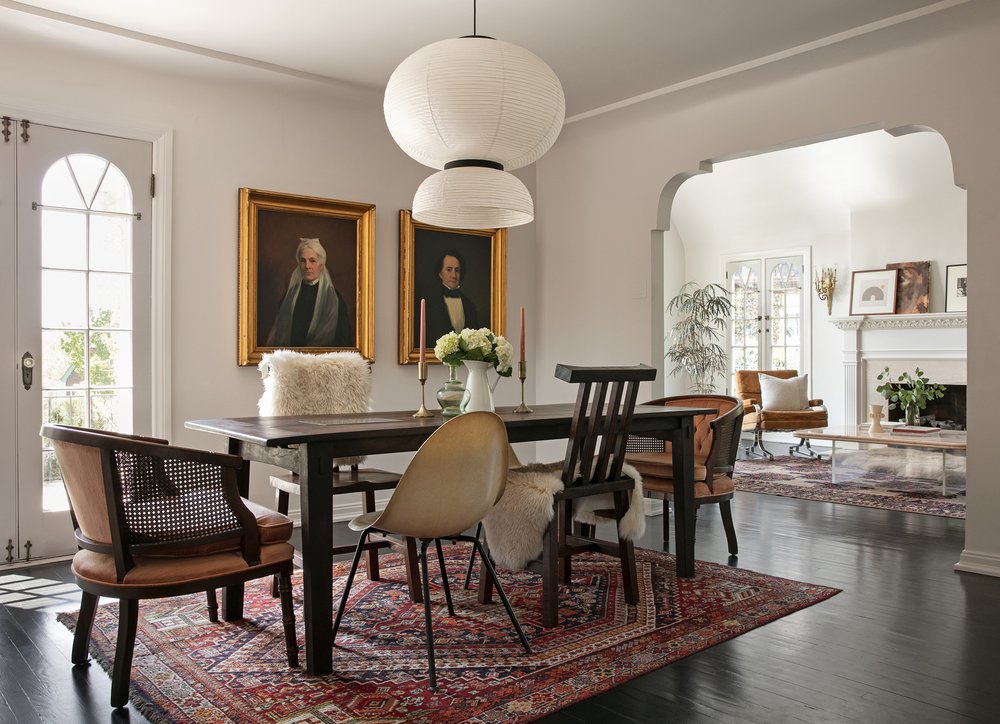
When talking about eclectic style, designers often attribute balance to a successful scheme. While there are many ways to achieve this harmony (like balancing old and new pieces alike), you can also think of it literally by playing with scale.
“When using eclectic style, we like to play with scale,” says Susannah Holmberg. “We ensure a space feels grounded, despite the inherent movement of an eclectic interior, if we use pieces that are larger in scale, like overhead lighting and art.” In this dining room, a bulbous light fixture and a large pair of portraits balance out the hefty array of mismatching dining chairs below.
7. CHOOSE A FOCAL POINT
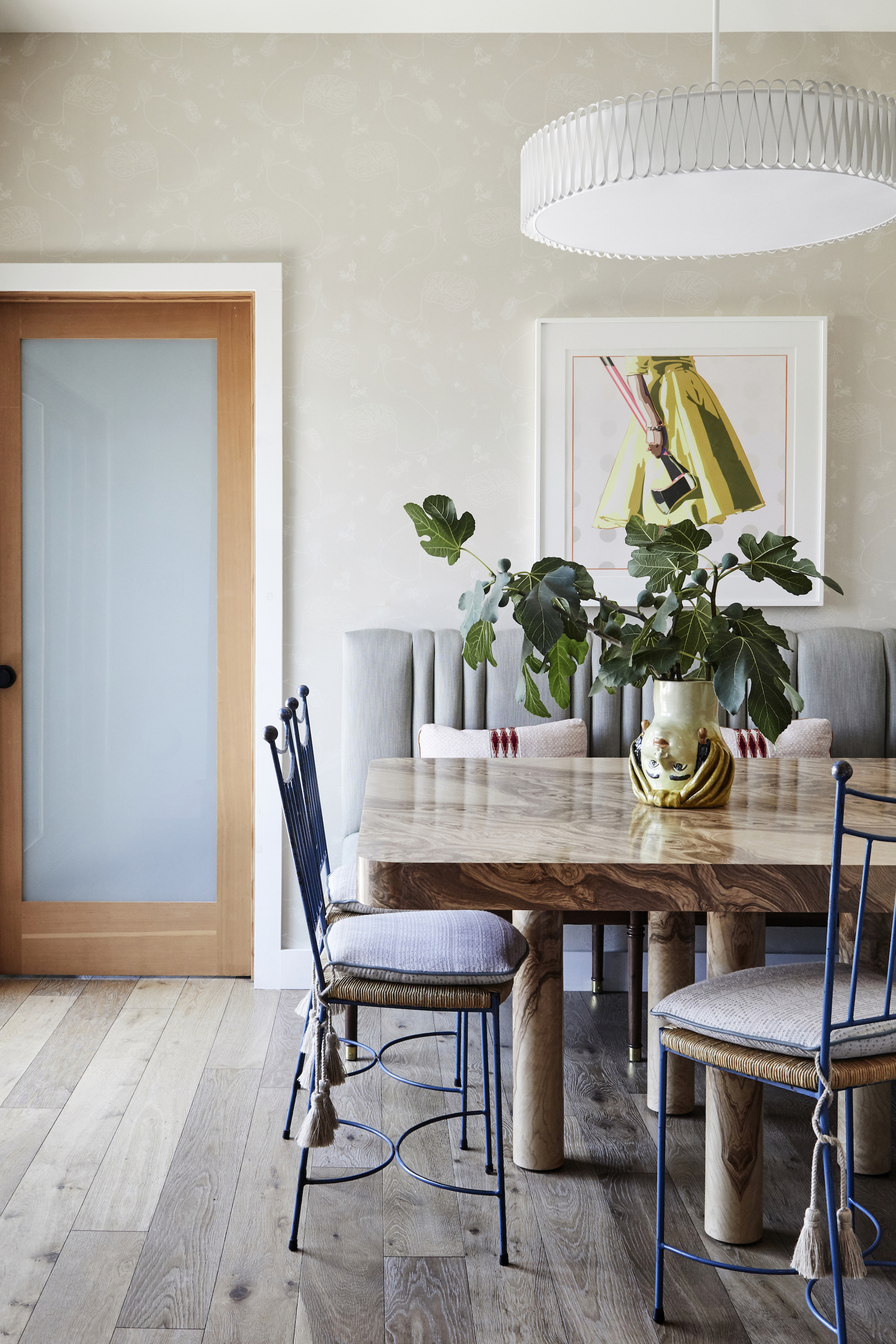
Without a place for the eye to rest, an eclectic interior can quickly lose its point of view. “Avoid the inclination toward too many focal points,” says designer Stefani Stein. “There is a fine line between eclectic and chaotic.” Choosing your focal points carefully – whether that’s from a statement artwork or one of the many accent wall ideas – will bring clarity to your space, guiding your eye throughout the room.
In the the dining room above, the space is focused yet flexible enough to mix a variety of styles. “In this space, the dining table is the focal point,” says Stein. “The items paired with it are unexpected – different genres, different color stories, old and new combined. However, I was also thoughtful about selections that didn’t compete with the dining table.”
8. ADD VARIATION TO GALLERY WALLS

Alas, there is no escaping gallery wall ideas when it comes to eclectic interiors, a tried-and-true method for mixing an array of styles and personality into one organized space. And while choosing pieces of art from different genres will inspire the eclectic spirit, you should also take the same approach to their frames. "Don't be afraid to mix different types of art and different types of framing," says Jessica Davis of Atelier Davis. "In fact, I would say that gallery walls are more interesting when the framing is varied."
In the interior above, Davis embraced a variety of unique frames to create layers of visual interest. "Some of the pieces don't have frames, some are ornate gilt frames, others are chrome or wood," explains Davis. "The days of a gallery wall where everything has the same black frame are over."
9. CREATE UNEXPECTED MOMENTS
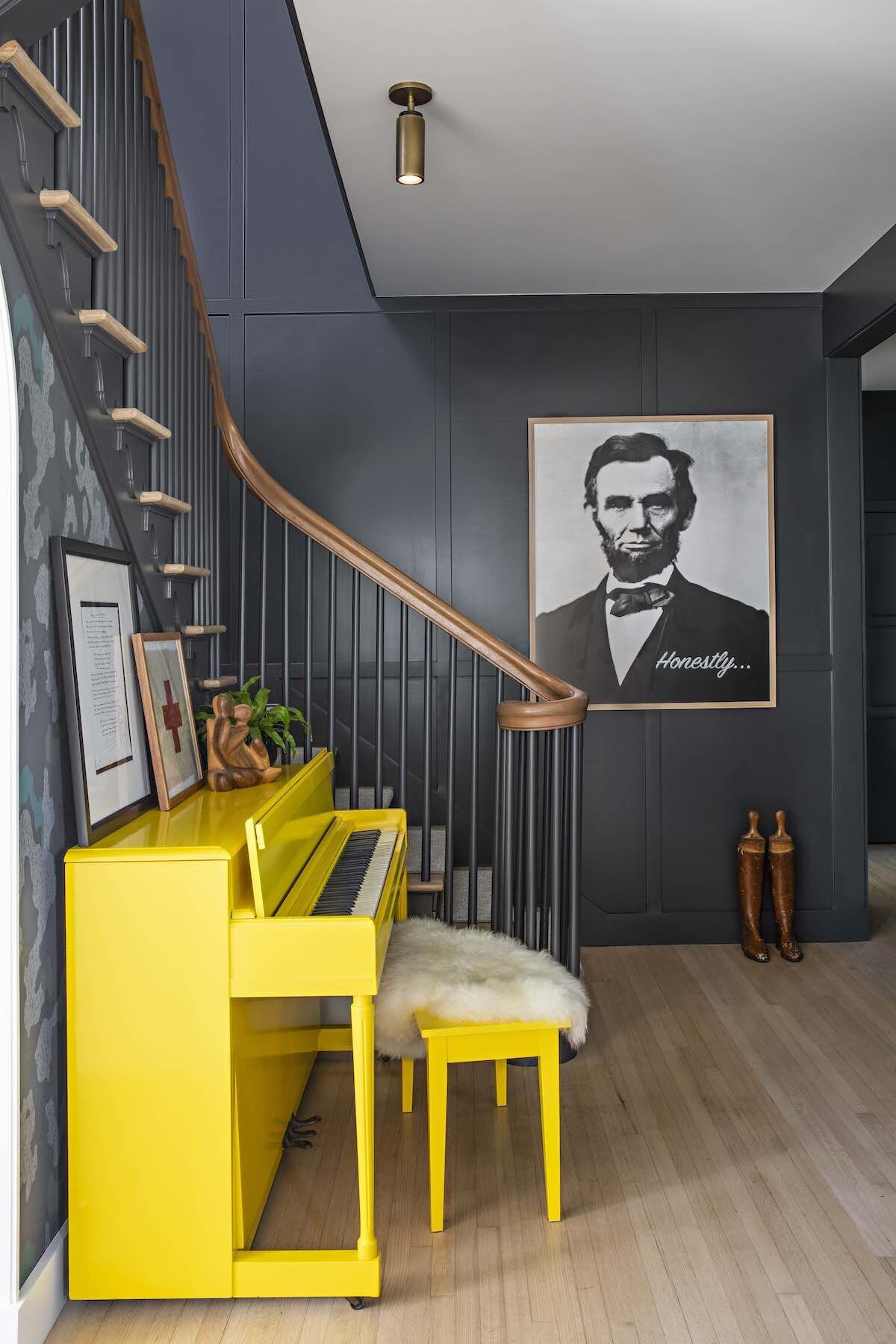
For most designers, eclecticism is less about ‘stuff’ and more about the subtle tensions between each piece of decor. In the same vein as focal points, you can think of this like creating a moment of surprise – an accent that draws the eye yet strikes visual interest within the space.
"Eclectic decor does not need to include a lot of pieces,” says Raili Clasen of Raili CA Design, noting the above interior. “Eclectic decor means to make a design moment of something unexpected such as painting or a beloved piano, as shown in our Coronado project." Next to the bottom of the staircase staircase, a piano was already a statement piece in its own right, but painting it in bright yellow creates a playful, cheery contrast.
10. PAIR BUSY PATTERNS WITH SIMPLE DECOR
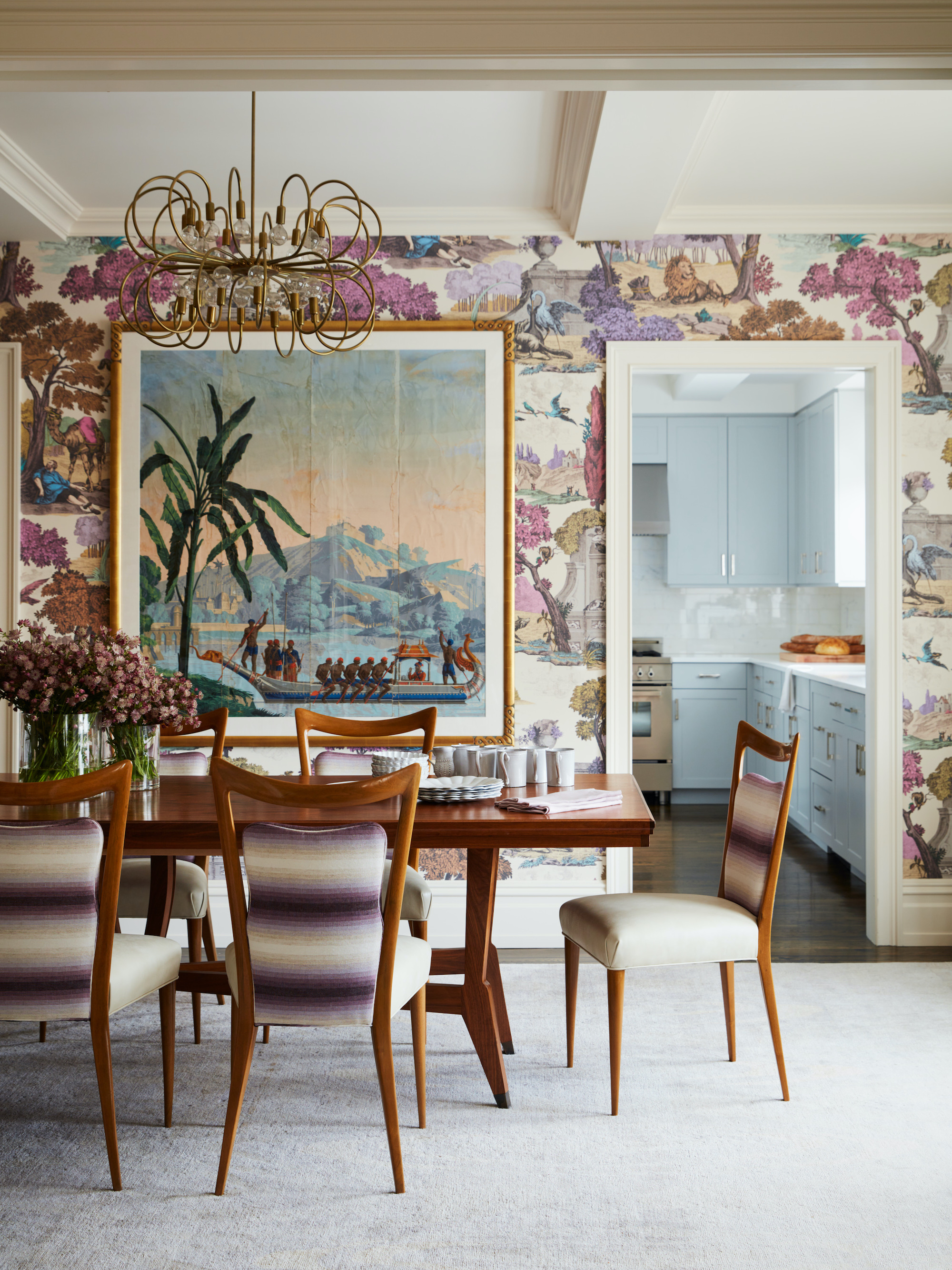
If there's one word that describes eclectic interiors that go overboard, it's chaos – it can happen if you cram too many materials and forms into your space without considering balance and scale, and it's especially common when using busy prints, patterns and textiles. So, if you're leaning into some of the latest wallpaper trends or adding in traditional patterns to create an eclectic space, consider balancing out these louder surfaces with simple items and small scale prints.
In the above dining room, New York's Mendelson Group calmed an otherwise raucous wallpaper with subtle details – like contemporary upholstery on the chairs, and a soft, solid grey rug – throughout the space. "I think what makes this dining room successful is the pairing of a graphic, scenic wall covering with simpler textiles and a table and chairs that are light and sculptural," says founder Gideon Mendelson. "This pairing creates balance instead of chaos. The pieces feel complementary but do not compete."
11. ADD A PLANT FOR A SOFT TOUCH
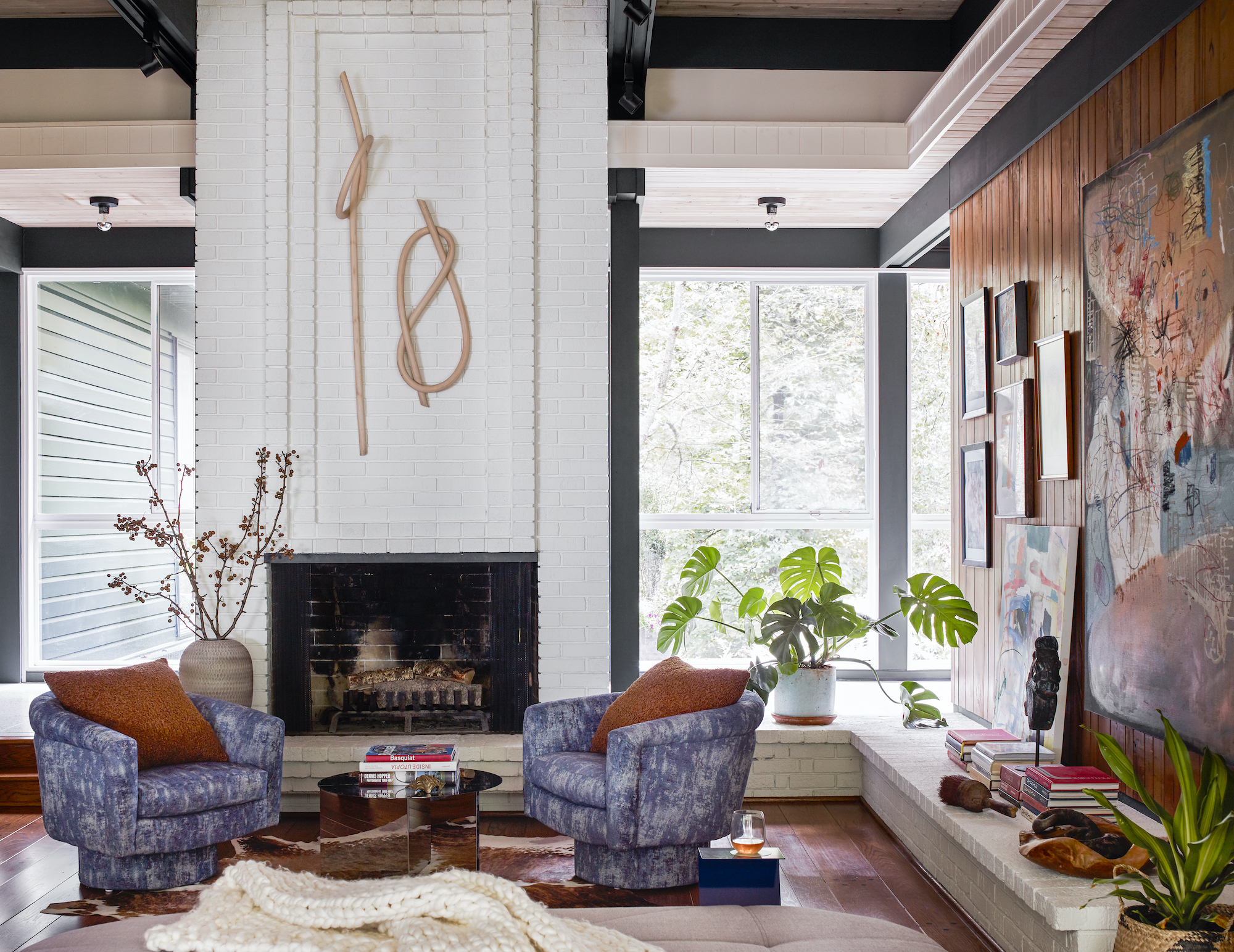
You'll find some overlap between eclectic and boho style interiors, but one of the more notable similarities – one found in nearly all of the interiors featured in this article – is the use of statement plants, from indoor trees to potted botanicals. For eclectic interiors with mismatched items, plants tend to fit right into place, acting as a buffer between disparate styles.
In the above interior, potted plants dot the room like a breath of fresh air. "Plants add a sculptural touch that is both 3 dimensional and organic so they play well with other items that might be more geometric and structural," Jessica Davis of Atelier Davis Jessica Davis of Atelier Davis. "They lend softness and help to break up the lines of a space."
Be The First To Know
The Livingetc newsletters are your inside source for what’s shaping interiors now - and what’s next. Discover trend forecasts, smart style ideas, and curated shopping inspiration that brings design to life. Subscribe today and stay ahead of the curve.
Keith Flanagan is a New York based journalist specialising in design, food and travel. He has been an editor at Time Out New York, and has written for such publications as Architectural Digest, Conde Nast Traveller, Food 52 and USA Today. He regularly contributes to Livingetc, reporting on design trends and offering insight from the biggest names in the US. His intelligent approach to interiors also sees him as an expert in explaining the different disciplines in design.
-
 Turns Out the Coolest New Café is Actually In Your Kitchen — Here's How to Steal the Style of TikTok's Latest Trend
Turns Out the Coolest New Café is Actually In Your Kitchen — Here's How to Steal the Style of TikTok's Latest TrendGoodbye, over-priced lattes. Hello, home-brewed coffee with friends. TikTok's 'Home Cafe' trend brings stylish cafe culture into the comfort of your own home
By Devin Toolen Published
-
 5 Bathroom Layouts That Look Dated in 2025 — Plus the Alternatives Designers Use Instead for a More Contemporary Space
5 Bathroom Layouts That Look Dated in 2025 — Plus the Alternatives Designers Use Instead for a More Contemporary SpaceFor a bathroom that feels in line with the times, avoid these layouts and be more intentional with the placement and positioning of your features and fixtures
By Lilith Hudson Published